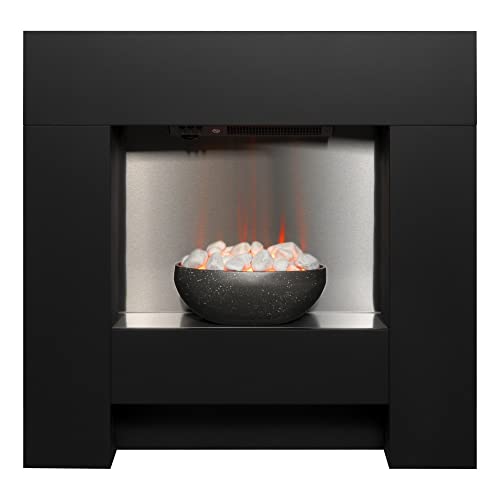The Fireplace: A Warm Embrace of Tradition and Comfort
Fireplaces have been an important part of human habitation for centuries, acting as a source of warmth, a meeting place, and a symbol of convenience. While the modern variations might vary remarkably from their ancient ancestors, the appeal of a fireplace endures. This short article checks out the various aspects of fireplaces, including their history, function, types, and maintenance, while likewise resolving often asked concerns.
The Evolution of Fireplaces
Fireplaces date back to prehistoric times when open flames were utilized for cooking, heating, and defense from wildlife. Over click the next web page , fireplaces progressed from easy fire pits to the advanced performances we see today. Here is a quick timeline of their development:
- Prehistoric Era: Cavemen used open flames for heat and cooking. Wind and smoke typically blew into residences.
- Middle Ages: Stone and brick fireplaces ended up being common in homes and castles, including chimneys to carry smoke outside.
- Renaissance: Elaborately designed mantels emerged, and fireplaces became centers of social interaction.
- Industrial Revolution: Innovations in heating materials caused a range of designs and performances.
- Modern Era: The advent of gas, electric, and bioethanol fireplaces provided cleaner options to traditional wood-burning systems.
Table 1: The Evolution of Fireplaces
| Age | Characteristics |
|---|---|
| Ancient Era | Open flames for heat and cooking |
| Middle Ages | Stone and brick structures with early chimneys |
| Renaissance | Ornate mantels, social centers |
| Industrial Revolution | Diverse styles, development of new materials |
| Modern Era | Gas, electric, and bioethanol alternatives |
The Purpose of a Fireplace
Fireplaces serve dual purposes: they supply physical warmth and create a psychological environment. Homeowners typically gather around the fireplace to bond, share stories, and enjoy a cozy setting. The radiance of a fire can be soothing, contributing to a sense of relaxation and intimacy. Beyond personal satisfaction, fireplaces also offer functional benefits, including:
- Home Heating: Effective heat source, particularly in chillier environments.
- Increased Home Value: A properly designed fireplace can boost the aesthetic worth of a home.
- Emergency situation Heating: In case of power outages, wood-burning fireplaces can function as a crucial heat source.
- Visual Appeal: A focal point that adds to interior decoration.
Kinds of Fireplaces
Today, fireplaces can be found in various styles and fuel types, accommodating a varied variety of choices and settings. Here are some common types:
Wood-Burning Fireplaces:
- Traditional fire pits
- Classic masonry fireplaces
- Require considerable maintenance and chimney maintenance
Gas Fireplaces:
- Available in both direct vent and ventless ranges
- Simpler to use and keep than wood-burning fireplaces
- Supply instant heat with a flick of a switch
Electric Fireplaces:
- Offer associated heat sources without real flames
- Typically created to simulate traditional fireplaces
- Suitable for smaller areas and homes without a chimney
Bioethanol Fireplaces:
- Use bioethanol fuel, providing a sustainable alternative
- Require no ventilation and can be placed anywhere
- Safe and simple to keep
Table 2: Types of Fireplaces
| Type | Fuel Source | Functions | Maintenance Requirements |
|---|---|---|---|
| Wood-Burning | Wood | High ambiance, heat source | Routine chimney cleaning |
| Gas | Natural gas or gas | Instantaneous heat | Very little, periodic servicing |
| Electric | Electricity | Easy setup | Very low upkeep |
| Bioethanol | Bioethanol fuel | Ventless, portable | Low, primarily cleaning up |
Upkeep and Safety Considerations
Owning a fireplace involves certain responsibilities, particularly regarding its safe operation and long-term maintenance. Here are necessary upkeep pointers and security standards:
Maintenance Tips:
- Annual Inspection: Always have your chimney and fireplace inspected at least as soon as a year by a qualified specialist.
- Regular Cleaning: Clean out ashes and particles after each usage, and make sure the flue is open before starting a fire.
- Examine for Cracks: Inspect masonry for cracks or damage to prevent structural concerns.
- Usage Proper Fuel: Only usage dry, skilled wood for wood-burning fireplaces; do not burn treated wood.
Safety Guidelines:
- Install Smoke Detectors: Ensure smoke alarm are practical, testing them regular monthly and replacing batteries as needed.
- Keep a Fire Extinguisher: Have one nearby, even if a fireplace is used infrequently.
- Supervise Flames: Never leave a fire unattended, and ensure children and pets are kept track of around the fireplace.
Often Asked Questions (FAQs)
1. How can I minimize smoke from a wood-burning fireplace?
To decrease smoke, usage dry, skilled wood, and make sure that your chimney is tidy and unblocked.
2. Is it safe to utilize gas fireplaces throughout a gas leakage?
Never use a gas fireplace throughout a gas leakage. Right away leave the area and contact gas services for help.
3. Can I set up an electric fireplace myself?
Electric fireplaces are typically easy to set up, but it is suggested to speak with professionals to guarantee security and compliance with local building codes.
4. What is the very best type of fireplace for small spaces?
Electric fireplaces or bioethanol models are frequently best for small spaces, as they do not need substantial ventilation or structural modifications.
Fireplaces have transcended their initial purpose of supplying heat to become valued aspects of home design and domesticity. They stimulate memories of warmth, events, and togetherness while providing practical benefits that improve modern living. By understanding the numerous kinds of fireplaces, their maintenance, and safety practices, property owners can take pleasure in the classic appeal of this beloved feature for generations to come.

